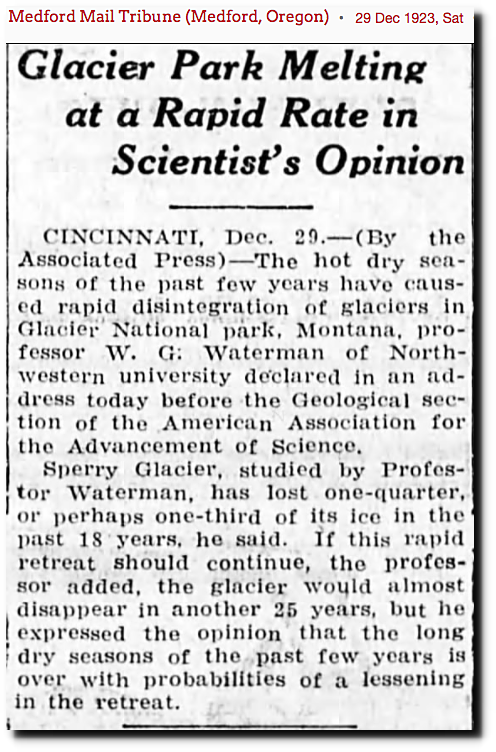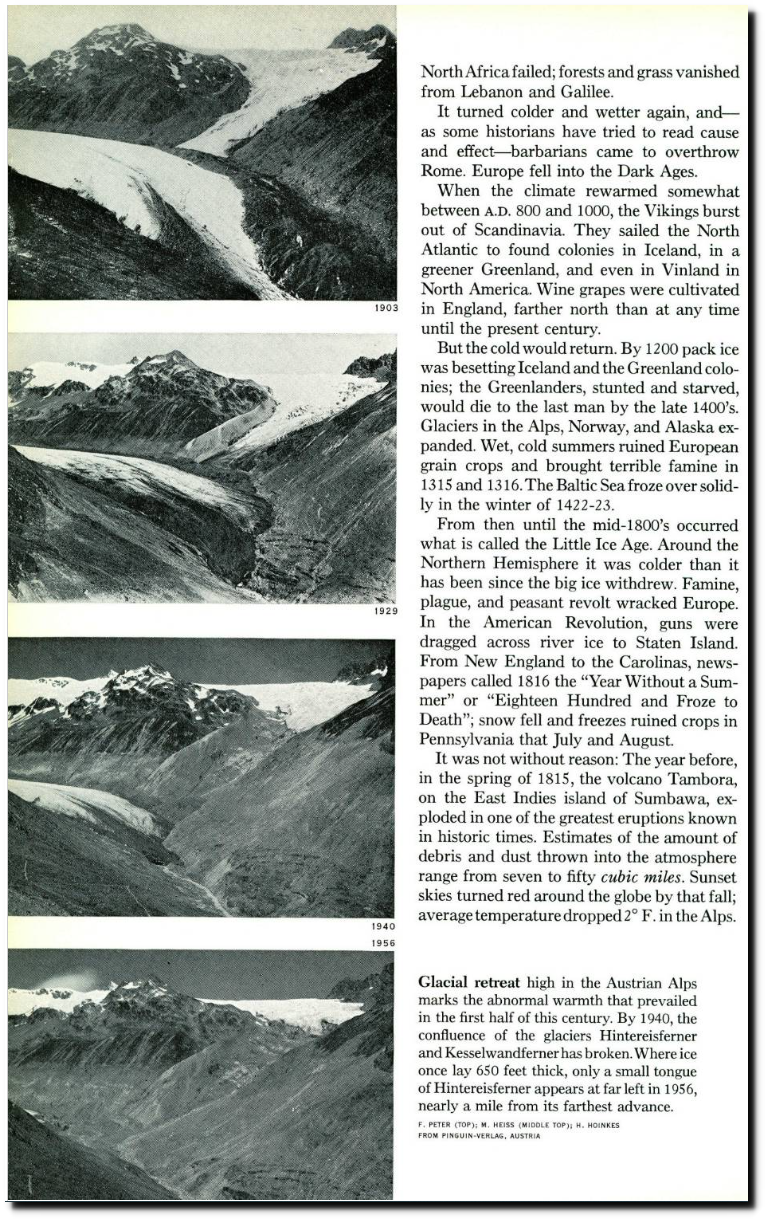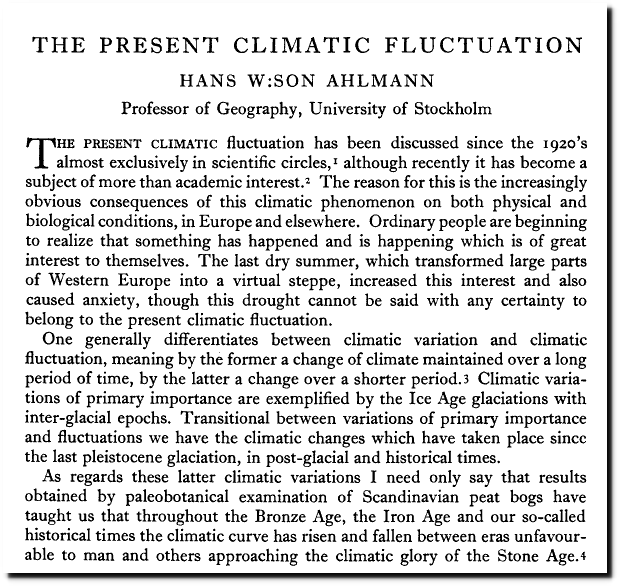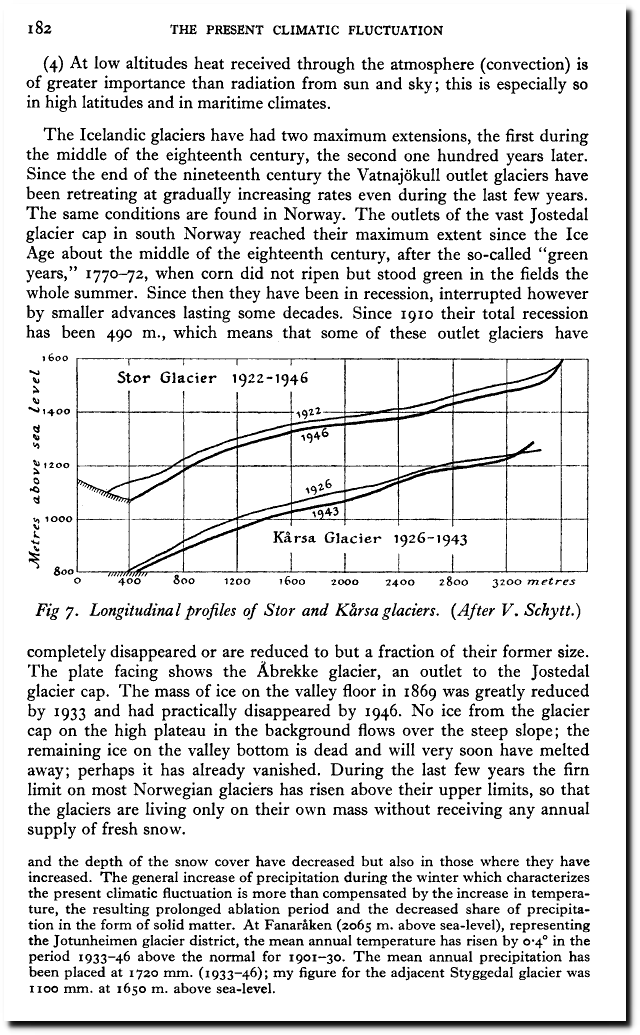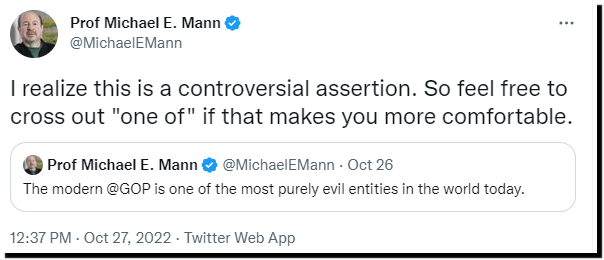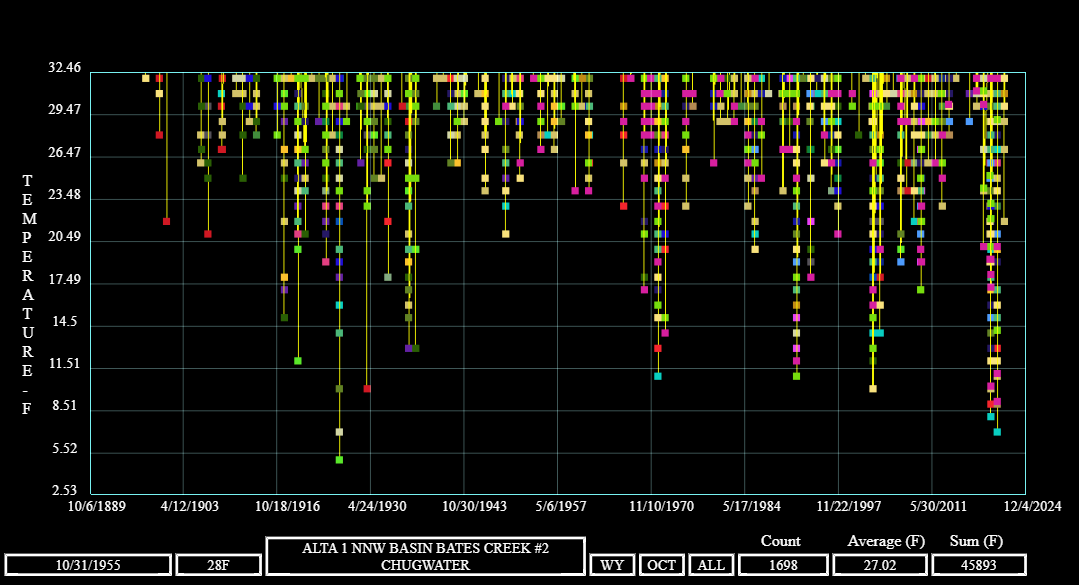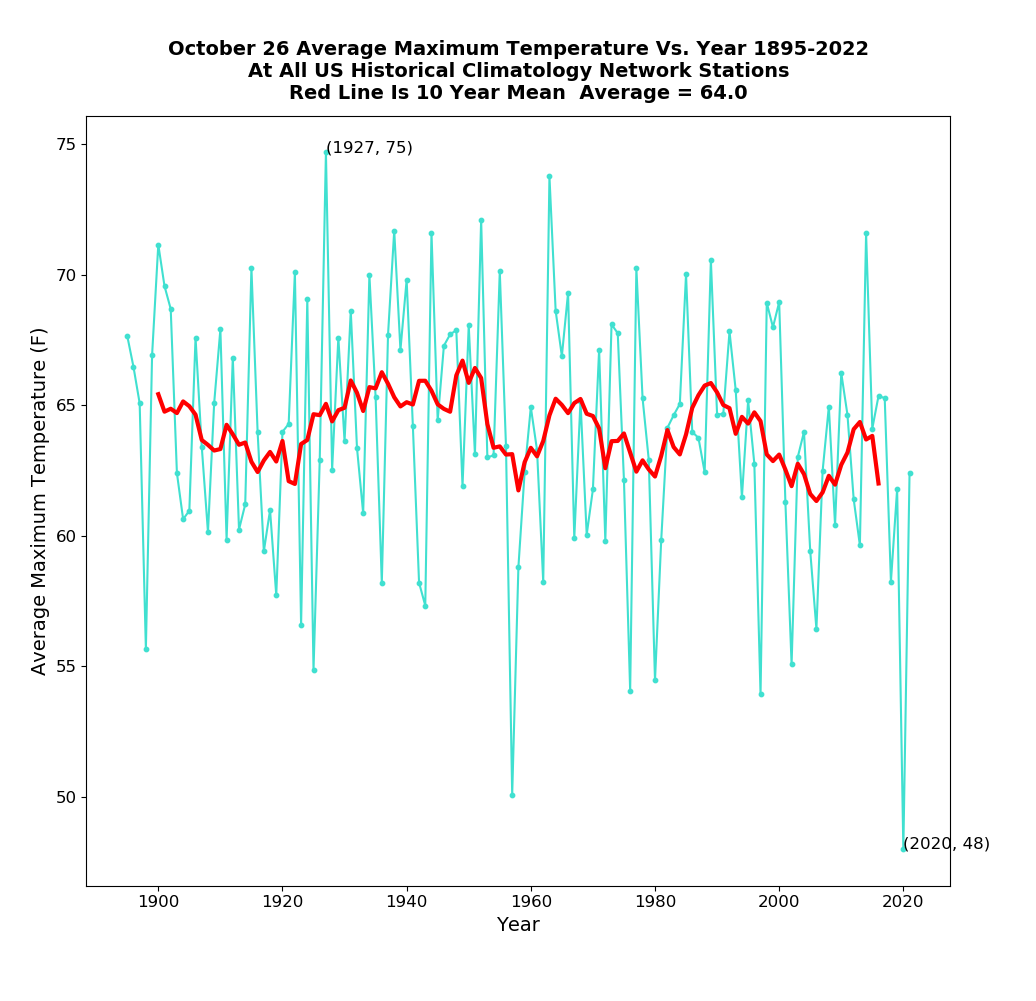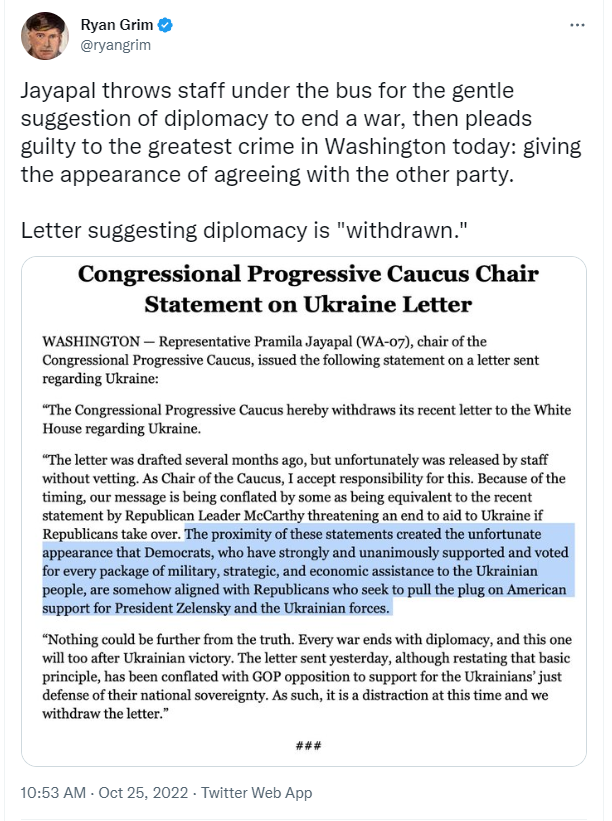
Opinion | Climate Change Is Real. Markets, Not Governments, Offer the Cure. – The New York Times
SR-216 SUMMER CLIMATE AT SELECTED SITES ON THE ROSS ICE SHELF AND THE GREENLAND ICE SHEET
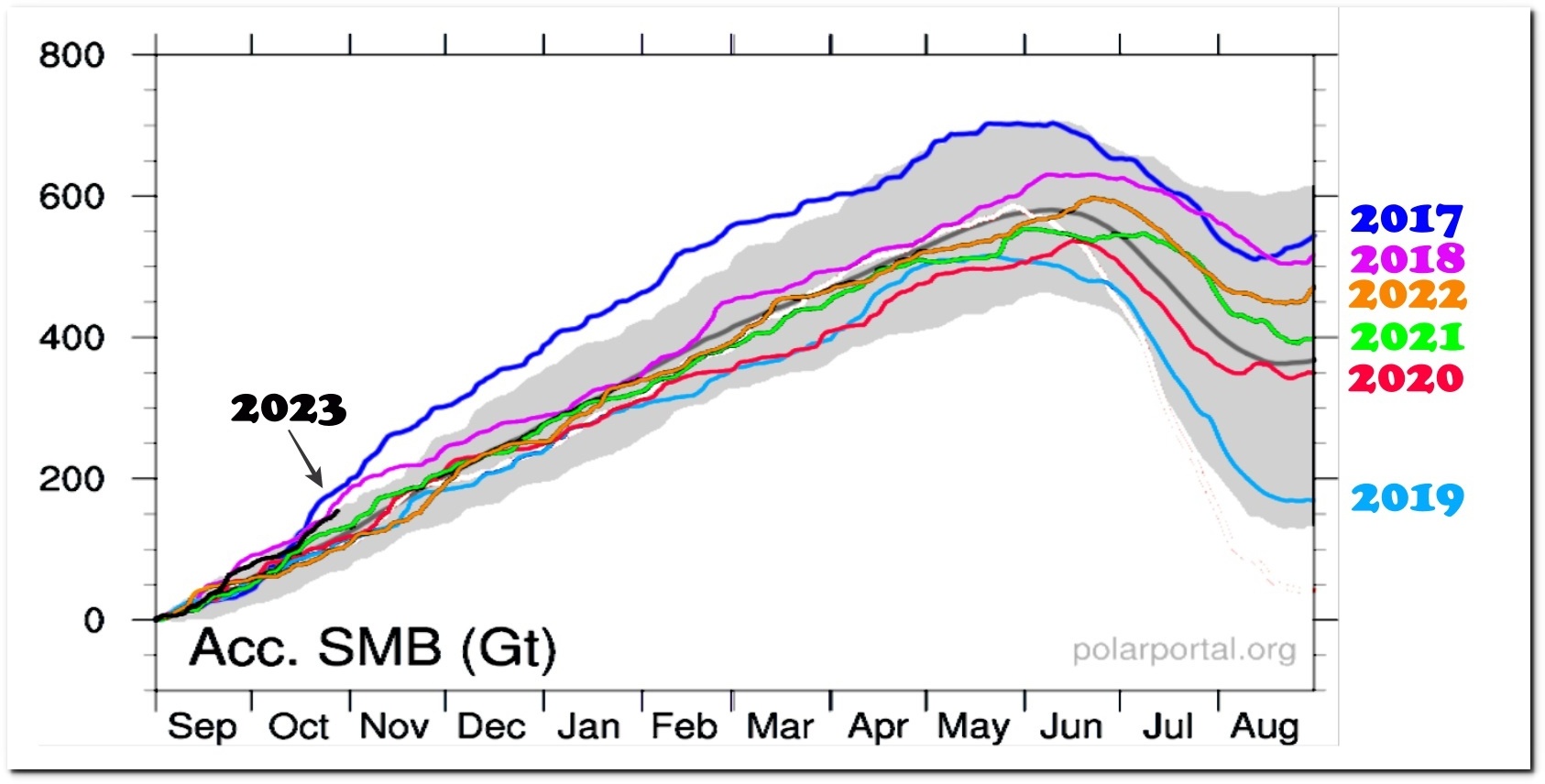
Surface Conditions: Polar Portal
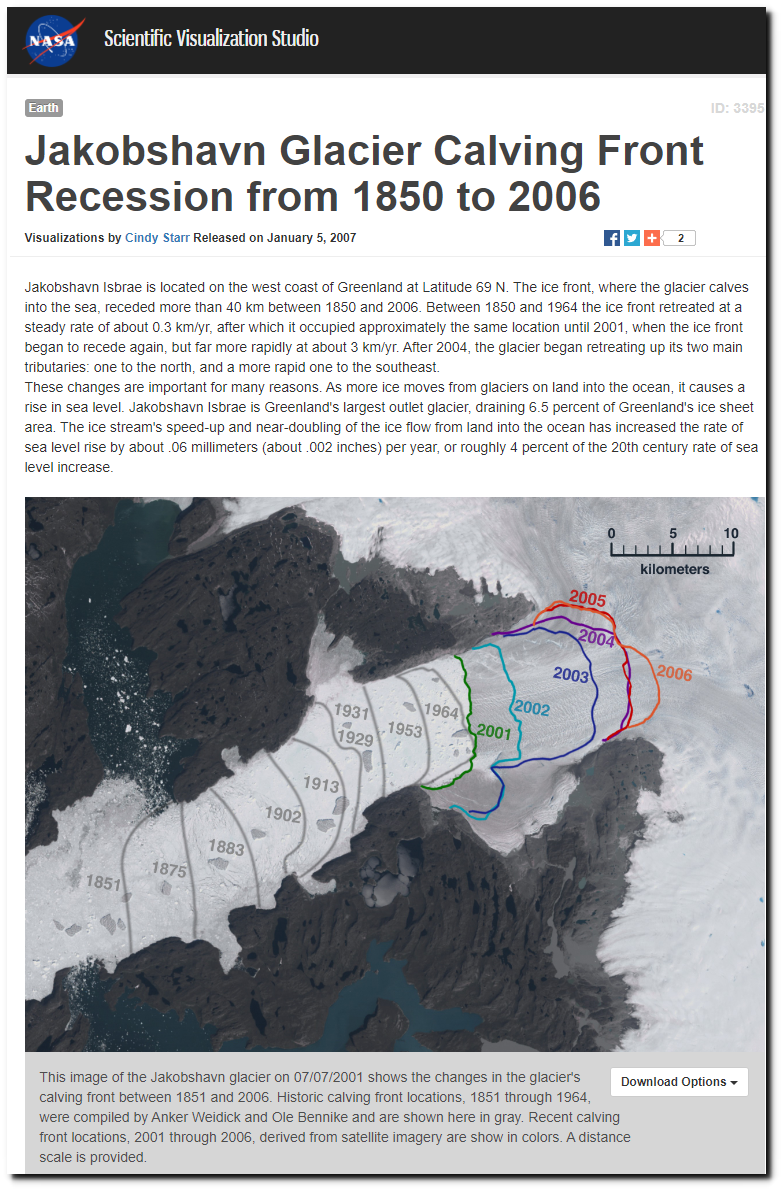
SVS: Jakobshavn Glacier Calving Front Recession from 1850 to 2006

Jakobshavn Glacier Grows for Third Straight Year – Climate Change: Vital Signs of the Planet
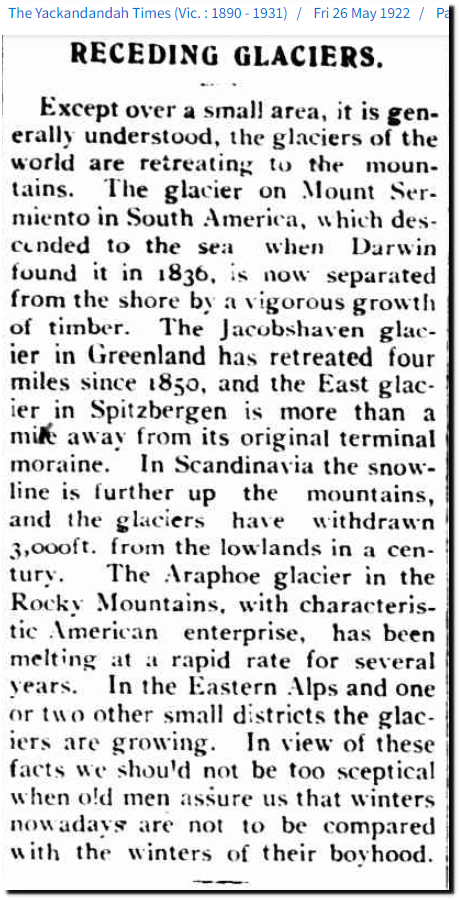
26 May 1922 – RECEDING GLACIERS. – Trove

 16 Aug 1902 – Alpine Glaciers Disappearing. – Trove
16 Aug 1902 – Alpine Glaciers Disappearing. – Trove
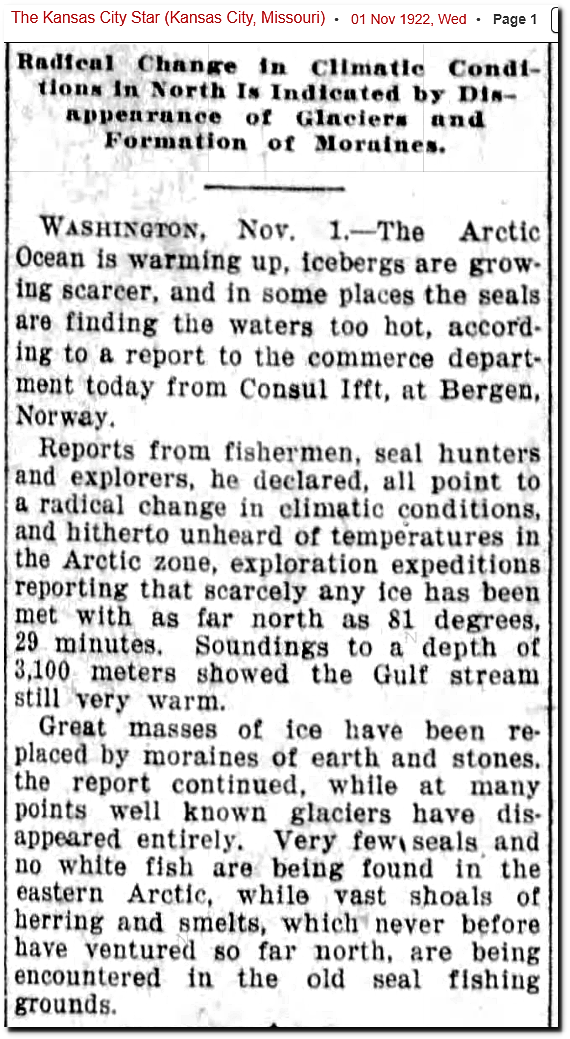
01 Nov 1922, 1 – The Kansas City Star at Newspapers.com
29 Dec 1923, Page 5 – at Newspapers.com
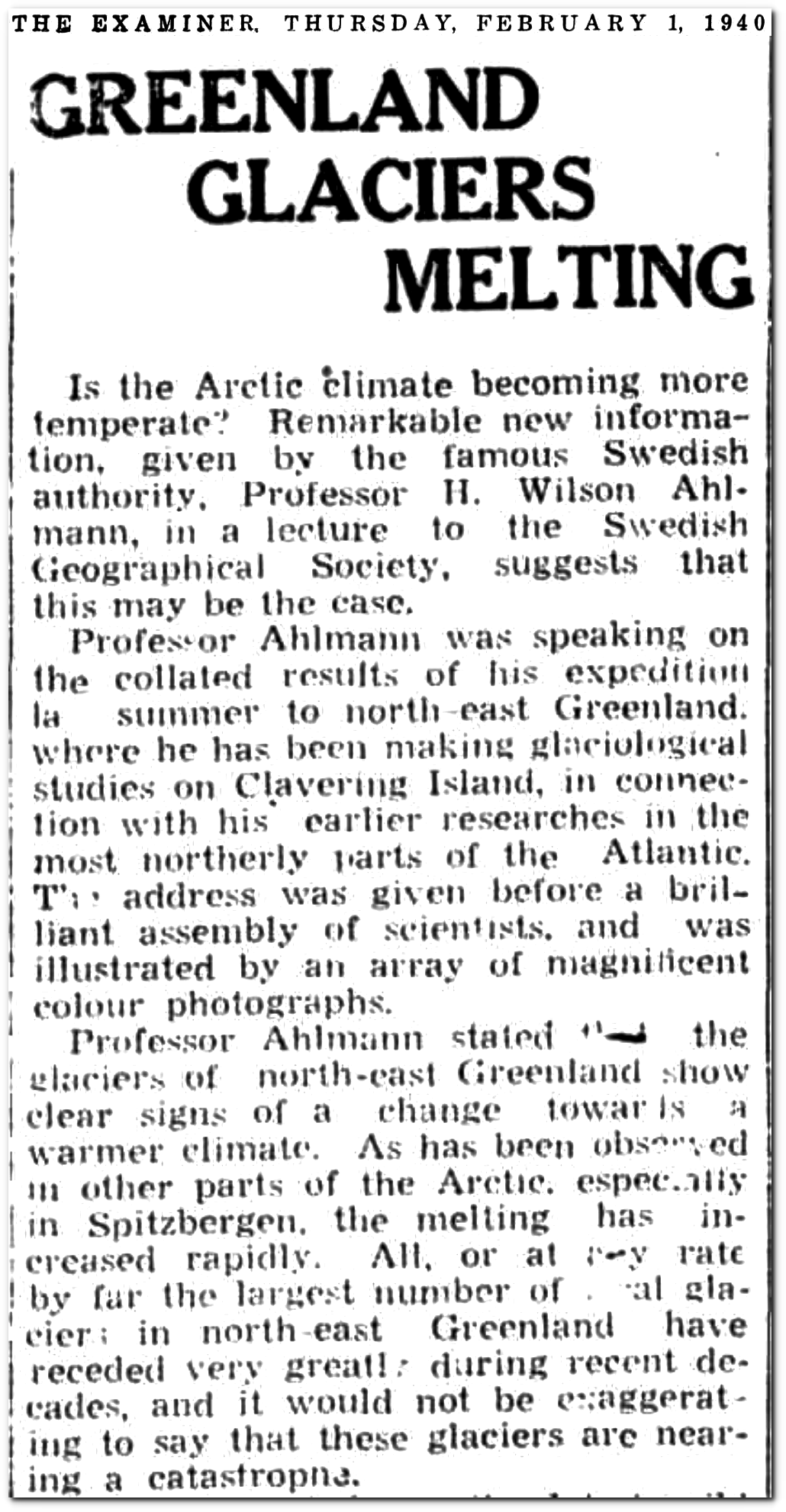
01 Feb 1940 – GREENLAND GLACIERS MELTING – Trove
National Geographic Magazine Archive


